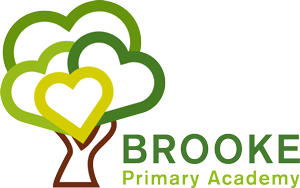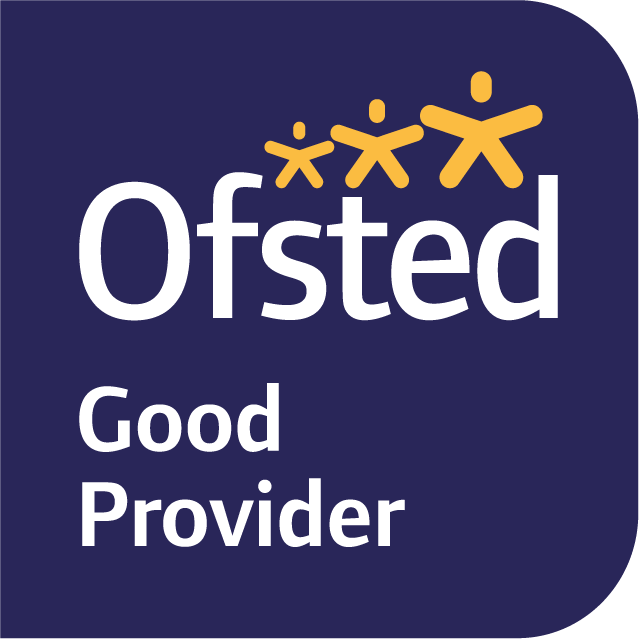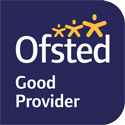
A Venn Academy Trust School
– Together we will…
Venn is a pioneering academy trust, committed to building educational environments where all pupils are inspired to become lifelong learners who achieve the very highest standards possible.
Collaborating with all partners, the Trust works with its unique settings to create world class learning experiences for all.

Welcome to Brooke Primary Academy

I would like to say a very warm welcome and thank you for taking the time to look at our website.
I am delighted to have this opportunity to tell you about the academy and hope it will give you an insight into the wide range of opportunities offered to every pupil.
If there is any more information you need then please do not hesitate to get in touch and make an appointment to come and visit the staff and children in the academy.
At Brooke Primary Academy, we aim to provide the very highest standards of education. All the staff have high expectations and work closely together to ensure each child achieves their full potential.
We aim to provide the children, staff and visitors with a safe, warm and welcoming environment; one in which relationships can be fostered and learning can be loved.
At our academy, we encourage the development of independence, respect, ambition, enthusiasm, kindness and confidence. We also emphasise the importance of caring, sharing and learning to work and play together. These are skills and attitudes which are important throughout life and will equip our children to be respectful and responsible members of a community.
Obviously, the school is only part of a child’s education. The staff recognise that it is imperative to involve parents and carers with the process of learning. We actively encourage a partnership between home and school. I strongly believe in an ‘open-door’ policy and encourage parents to come in and ask questions, raise concerns or to simply up-date us with information.
We all want the best for the children of Brooke Primary Academy and by working together we can ensure this happens.
Get all the latest updates from Facebook

Overall Effectiveness: The school is rated “Good” in all categories, including quality of education, behaviour and attitudes, personal development, leadership and management, and early years provision.

Governance and Leadership: Trustees and governors are skilled and committed, regularly visiting the school and maintaining an accurate picture of its operations to ensure continued improvement.

High Expectations and Progress: The school sets high expectations for all pupils, which are being met. Parents appreciate the support and information provided by the staff and are pleased with the progress their children make.

Safeguarding: The school has effective safeguarding arrangements, creating an open and positive culture that prioritises pupils’ interests.

Curriculum and Learning: The curriculum is well-considered, building on previous learning to deepen understanding. While assessment systems need improvement, the school’s overall approach helps in identifying and supporting pupils’ needs.

Positive Behaviour: Changes in how behaviour is managed have helped pupils reflect on their feelings and make better choices. This has resulted in positive behaviour during lessons and playtimes.

Extracurricular Activities: There is a wide range of clubs available, such as football, rugby, forest school, and choir, which help develop pupils’ talents and interests.

Early Years Provision: The early years setting promotes positive relationships and collaboration among children. Adults model effective communication and use assessment well to engage children in their learning.

Reading and Phonics: The school is committed to ensuring all pupils learn to read. Effective training and support for teachers, along with appropriate reading materials and catch-up sessions, help pupils read accurately and confidently.

Promotion of Values: Pupils learn about diversity and British values through various activities and demonstrate positive attitudes and respect for others. The school also encourages community involvement, such as the choir singing in residential homes and helping at the local food bank.

School Environment: The academy is described as a warm and welcoming place where pupils feel safe and happy. Respectful and positive relationships are central to the school’s environment.

Support for SEND: The school effectively identifies and supports pupils with special educational needs and/or disabilities (SEND), involving parents in the assessment process and adapting lessons to help these pupils build new knowledge.

Anti-Bullying: Pupils respect each other, believe in the school’s values, and feel confident that any issues, including bullying, would be resolved quickly by adults.









At Brooke we celebrate all children’s attendance in the school! This week Y1 have won the prize of a Pajama day for their highest key stage attendance. They had some very comfy lessons. ... See MoreSee Less
0 CommentsComment on Facebook
Year 3’s have become fantastic palentologists. They have created their very own salt dough and used small animal figures to create their
own trace and whole body fossils. ... See MoreSee Less
0 CommentsComment on Facebook
Y6BTH have enjoyed another cracking P.E. session with the Club Doncaster coaches! We are sending out a huge 'well done' to all the children for their great attitude towards all of their physical education, this term! ... See MoreSee Less
0 CommentsComment on Facebook
Job Vacancies - Brooke Primary Academy ... See MoreSee Less
Job Vacancies - Brooke Primary Academy
brookeprimaryacademy.org.uk
Job Vacancies Welcome to the recruitment page for Venn Academy Trust. We are excited about your interest in joining our dedicated team, committed to fostering educational excellence across our diverse...0 CommentsComment on Facebook